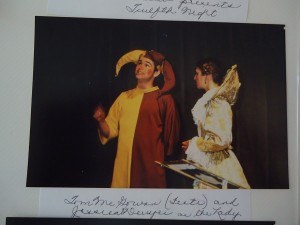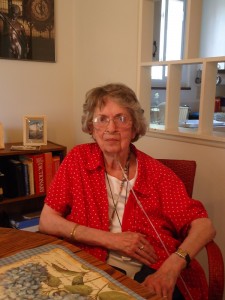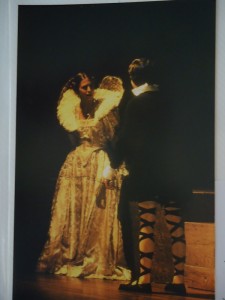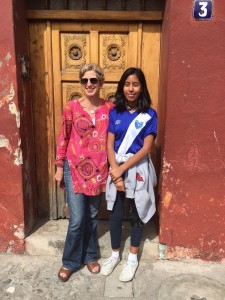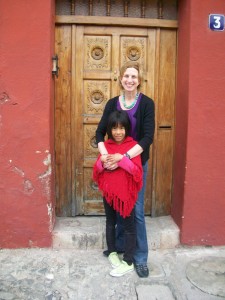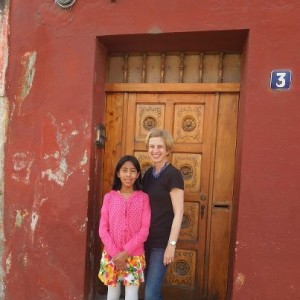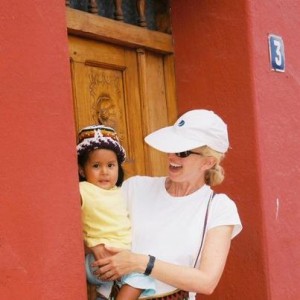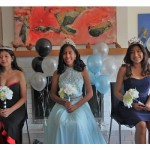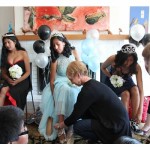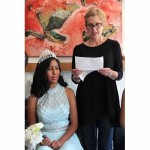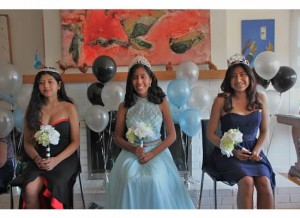
Sunday we celebrated the Quinceaneras of three girls in our group of adoptive families in the San Francisco Bay Area. Glorious! Quinceanera is a celebration of a young Latina woman’s 15th birthday, acknowledging her transition from girl to womanhood. Customs to celebrate Quinces vary from family to family and may include a Catholic Mass, Courts and Groomsmen, mariachis and dancing. The parents in our three families incorporated traditions that resonated for us:
- The changing of footwear from flat shoes to high heels. (The girls entered in flats and the three mothers helped them change into high heels, a symbol of adulthood.)
- The exchange of a favorite stuffed animal for a tiara. (The letting go of “childish things.”)
- A speech addressed to each daughter, delivered by her mother.
I’m grateful to my co-Quinceanera parents, Marie + Ralph and Miriam+ Allen, for contributing ideas, balloons, decorations, cake, and, above all, joyful spirits.
Thanks, too, to adoptive mom Ginny Curtin, for her fabulous photos to record the event, and to everyone in our community–parents, kids, significant others, friends–for sharing this special day. And always, to my husband Tim. xo
Below is the speech I wrote for Olivia.
THOUGHTS ON QUINCEANERA
Back in 2012, Olivia’s birth sister, Lucia, celebrated her Quinceanera. We were in Guatemala on our annual visit and wanted to do something special for the occasion. As is our custom, we went shopping together in the local market, and there we bought for Lucia her Quinceanera outfit: a wraparound skirt, called a corte, woven with hearts; an embroidered blouse called a huipil, made with fine fabric and fancy gold thread; and four-inch high heels I don’t think Olivia’s birth mother was thrilled about, but Lucia absolutely loved.
The experience impressed upon me the importance of Quinceanera, a rite of passage our daughters share with young Latina women around the world, including their home country of Guatemala. It reminded me of the multiple identities my daughter holds: Guatemalan, Maya K’iche, US citizen, person who is adopted. How impressively she navigates all of them—with confidence, intensity, and grace.
Olivia, so many people have helped you become the person you are: compassionate and wise, intelligent and creative. Today we remember and thank them: Your birth mother and father, your grandmother Abuela, the long line of ancestors who have lived in the highlands of Guatemala since before the arrival of Christopher Columbus. Your two foster families, our friends in Guatemala. Your aunts, uncles, cousins, brothers, sisters, neighbors, grandparents, teachers, coaches, counselors, religious leaders. Our community of adoptive families, gathered here to mark this occasion.
Olivia: As you go forward and walk through life, stand tall and stay strong. Be who you are. Be true to yourself. Remember that many hands hold you up. Don’t let anyone dim your light.
We love you. ~
Save
Save
Save
Save
Save
Save
Save
Save
Save
Save
Save
Save
Save
Save
Save


 ShareThis
ShareThis



 ShareThis
ShareThis
